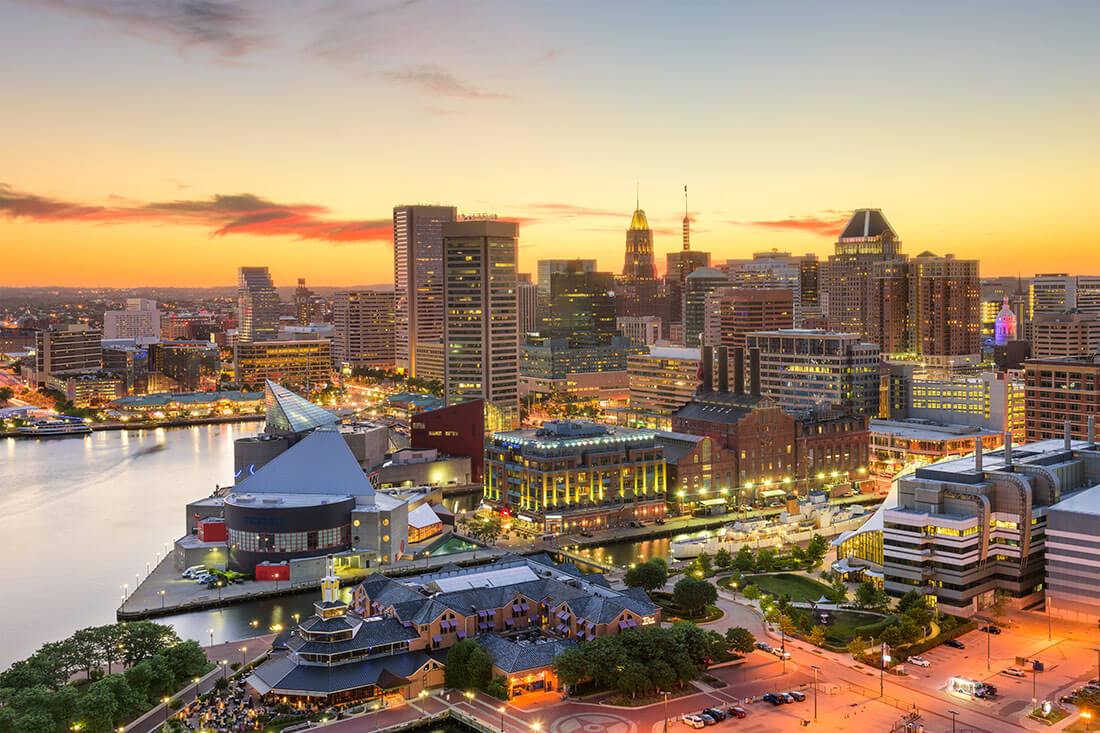Friday Five
June 13, 2025 | This week's latest on Maryland business and government
1 — State officials pleased with $1.6 billion bond sale, after weeks of worry over credit downgrade
Maryland “did very well” in the sale Wednesday of about $1.6 billion in bonds, state officials said, despite a recent credit downgrade that rattled their confidence and raised fears of higher costs. The Maryland Board of Public works on Wednesday voted to approve the sale of about $1.6 billion worth of bonds at a true interest cost of 3.55% and premiums of more than $125 million, according to a statement from the Maryland Treasurer’s Office. The bond sale was the first since ratings agency Moody’s downgraded Maryland’s creditworthiness in May from AAA to Aa-1, the second-highest rating.
Competitiveness: Anirban Basu, president of the Sage Policy Group, said that for years the state’s economic focus has been “eds, meds and feds”: educational services, medical research and delivery, and federal employment and contracting. But now that education, medicine and federal employment are under pressure, the state needs to attract significantly more private investment — something Maryland is struggling to do with its high tax rate.
2 — Maryland businesses sound off on looming IT services tax: Uncertainty, loopholes, fallout
Business leaders, defense contractors and elected officials gathered at the St. Mary’s County Chamber of Commerce on May 29 to unpack the implications of Maryland’s new 3 percent sales and use tax on information technology (IT) and digital services. The tax, scheduled to take effect July 1, has drawn strong criticism from stakeholders who say it was rushed through Annapolis in the final days of the legislative session and could cause widespread confusion and economic disruption. Attendees argued that the law’s definitions are vague and open to interpretation, leaving companies unsure whether their services fall within taxable categories.
Comptroller's Office: Comptroller Brooke Lierman issued guidance Wednesday to help businesses preparing for a 3 percent tax set to take effect next month on the sale and use of several informational technology services. To help businesses prepare for the tax hike, the office provided a “technical bulletin” explaining the ins and outs of the sales tax.
3 — Why Governor Moore is making a sales pitch to businesses in South Carolina
Governor Moore recently visited three fast-growing South Carolina businesses in what his office described as a key component of his economic growth agenda: Engaging with thriving businesses outside of Maryland to get them to think about expanding here. Moore and Republicans agree that part of Maryland’s poor budget situation this year was due to years of government spending increases and other policy decisions that undermined economic growth in the state. Visiting an auto manufacturer, a pharmaceutical company and a defense contractor during an otherwise political trip to the south was part of a larger effort to change that reality.
Walking the line: Moore’s critics in Maryland have said his approach has both helped and hurt the state’s chances at winning over new and existing businesses. We at the Maryland Chamber praise the governor’s steps to attract businesses, but his support for the 3 percent tax on data and technology services, for example, undermines that effort.
4 — Baltimore’s permit backlog is bad, new system made it worse
Baltimore is facing a significant permit backlog that’s hampering housing and redevelopment efforts across the city. As of June 3, just 9,941 permits had been issued for construction, demolition and land-use change — about half the number issued during the same period in 2024 and the lowest total since 2015. The city switched to a new online permit system in February, but the rollout has created more delays than improvements. February permits plunged to just 688 issued, and applicants frequently experience unclear guidance and repeated trips to offices just to transfer existing applications.
Economic development: The permitting gridlock affects projects of all sizes — from city-wide block rehabilitation efforts and museum work to small homeowner repairs and fire recovery — compounded by city staffing shortages and a cumbersome proprietary software implementation. Permitting delays risk stalling private investment, driving up development costs, slowing job creation and erodes confidence in the region’s ability to support economic growth and revitalization.
5 — Trump’s steel tariff hike sparks concern for Maryland projects, including Key Bridge rebuild
President Trump’s plan to double tariffs on foreign steel and aluminum — from 25 to 50 percent — could have sweeping effects on projects across Maryland, most notably the construction of the new Francis Scott Key Bridge. Steel prices have risen 16 percent since Trump became president in mid-January, according to the government’s Producer Price Index. Experts warn that even higher steel prices could threaten key infrastructure and manufacturing projects.
Key Bridge: Construction of the new Key Bridge is expected to begin in the early fall with an estimated cost between $1.7 billion and $1.9 billion. The new bridge, which will be a taller cable-stayed bridge, is projected to be completed by October 2028. Economists warn that if tariffs stay in place, projects that have not pre-ordered will likely face increasing costs, including the Key Bridge.
Advancing inclusive partnerships for a Maryland where all businesses and their communities thrive
The Maryland Chamber of Commerce is the state’s leading business advocacy organization — committed to working with our alliance of partners on critical public policy issues. With a focus on economic development and grassroots advocacy, we impact policies that directly affect Maryland business.

